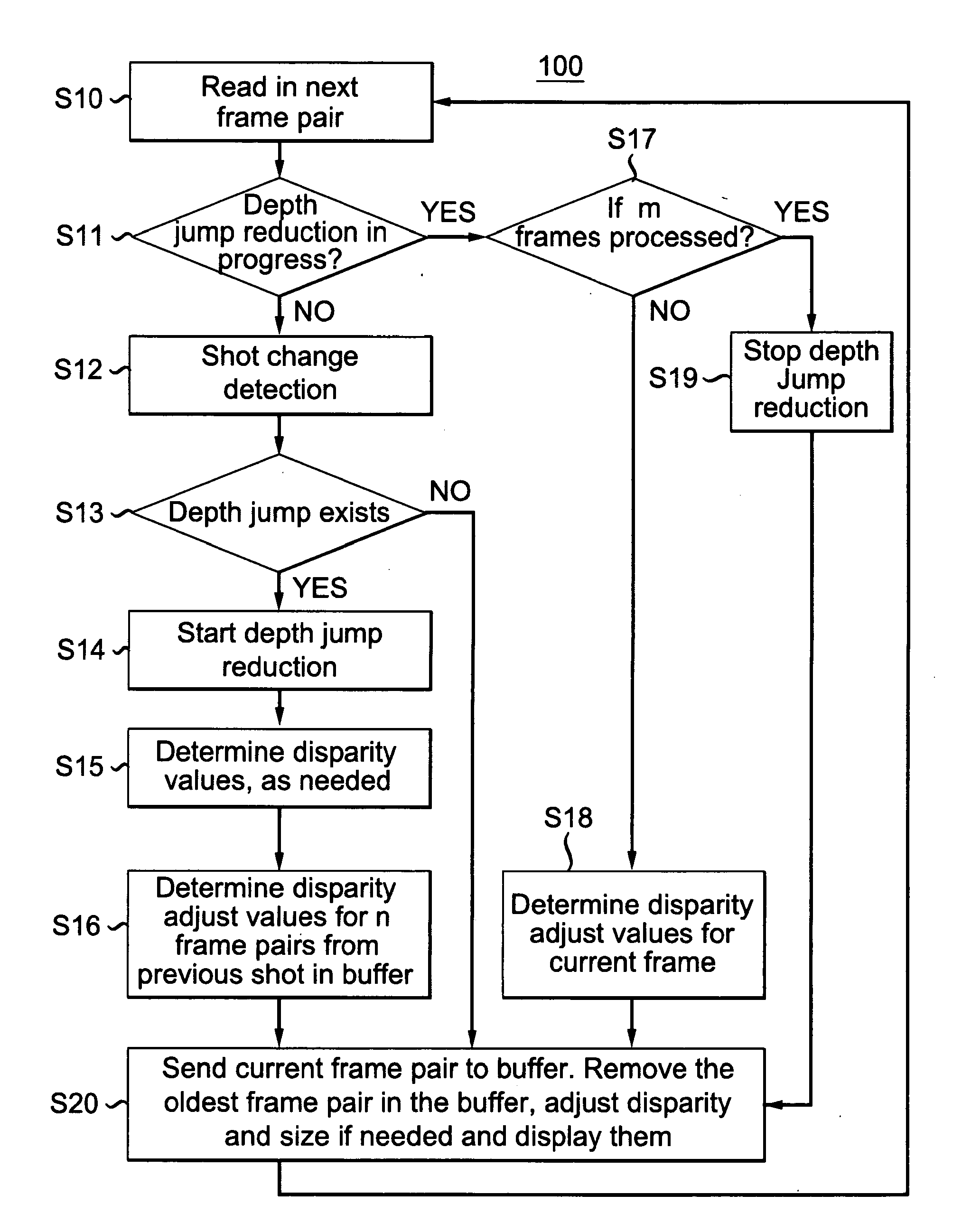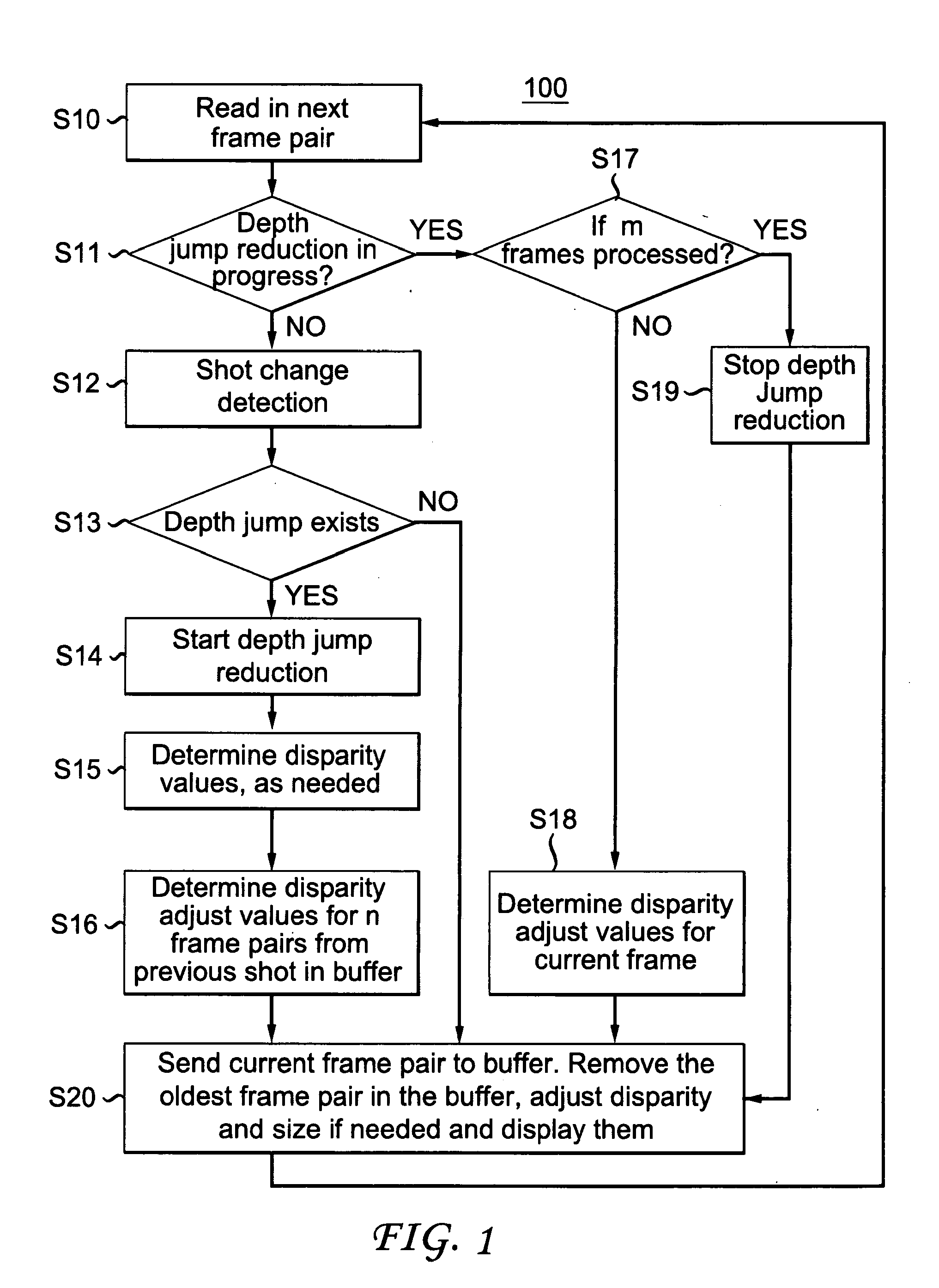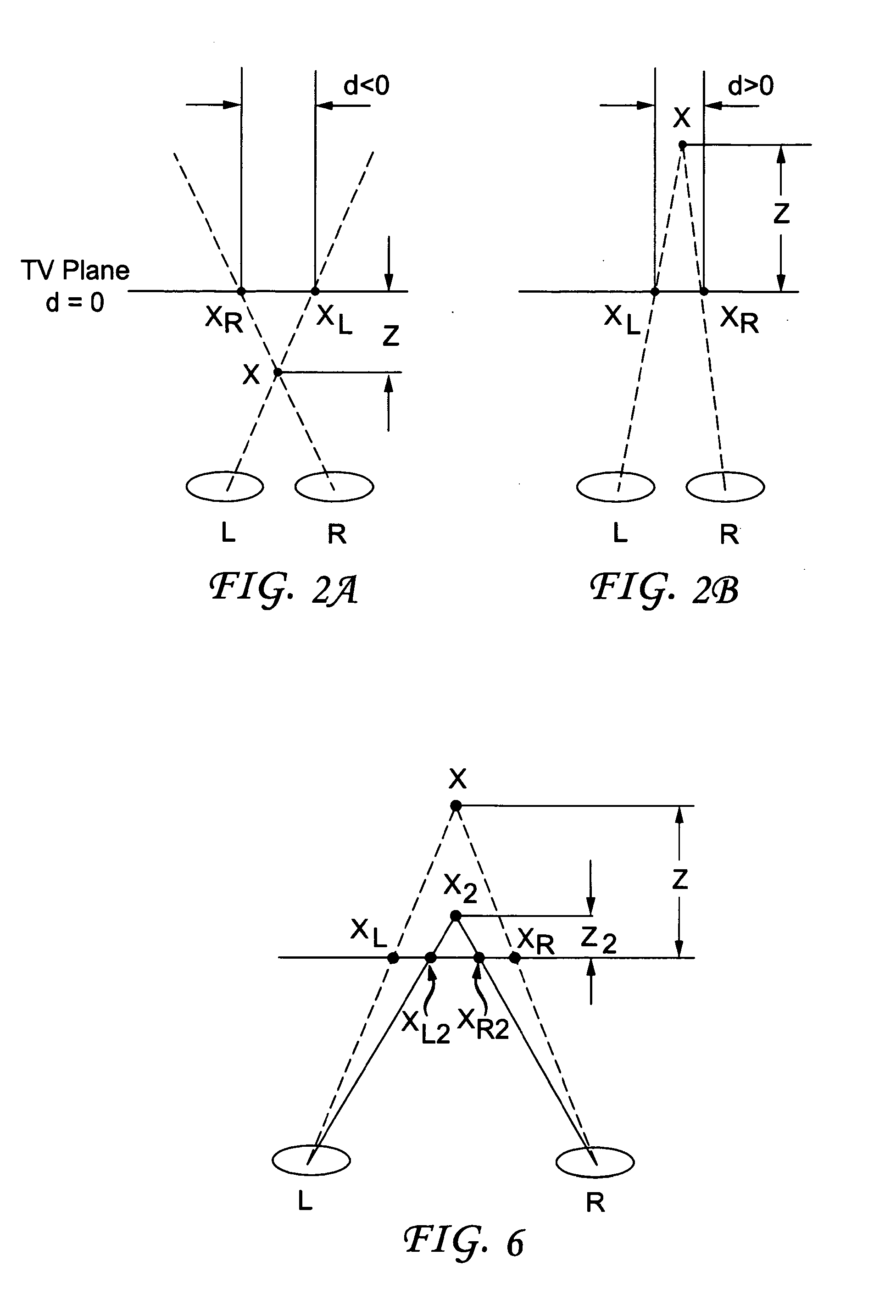Method of presenting three-dimensional content with disparity adjustments
a three-dimensional content and disparity adjustment technology, applied in the field of three-dimensional (3d) image presentation, can solve the problems of viewing problems, viewers can experience varying degrees of discomfort, adjacent image frame pairs have significant depth differences, etc., and achieve the effect of reducing or avoiding visual discomfort from depth jumps in received 3d video conten
- Summary
- Abstract
- Description
- Claims
- Application Information
AI Technical Summary
Benefits of technology
Problems solved by technology
Method used
Image
Examples
Embodiment Construction
[0023]A simple and effective automatic method is presented for reducing viewing discomfort, which may be perceived by a 3D TV user, when content is switched from one 3D shot or scene to another 3D shot or scene. Such switching may occur during channel surfing by the viewer or during commercial advertising breaks inserted between content segments.
[0024]Details of one or more implementations are set forth in the accompanying drawings and the description below. Even if described in one particular manner, it should be clear that implementations may be configured or embodied in various manners. For example, an implementation may be performed as a method, or embodied as an apparatus configured to perform a set of operations, or embodied as an apparatus storing instructions for performing a set of operations. Other aspects and features will become apparent from the following detailed description considered in conjunction with the accompanying drawings and the claims.
[0025]The present metho...
PUM
 Login to View More
Login to View More Abstract
Description
Claims
Application Information
 Login to View More
Login to View More - R&D
- Intellectual Property
- Life Sciences
- Materials
- Tech Scout
- Unparalleled Data Quality
- Higher Quality Content
- 60% Fewer Hallucinations
Browse by: Latest US Patents, China's latest patents, Technical Efficacy Thesaurus, Application Domain, Technology Topic, Popular Technical Reports.
© 2025 PatSnap. All rights reserved.Legal|Privacy policy|Modern Slavery Act Transparency Statement|Sitemap|About US| Contact US: help@patsnap.com



